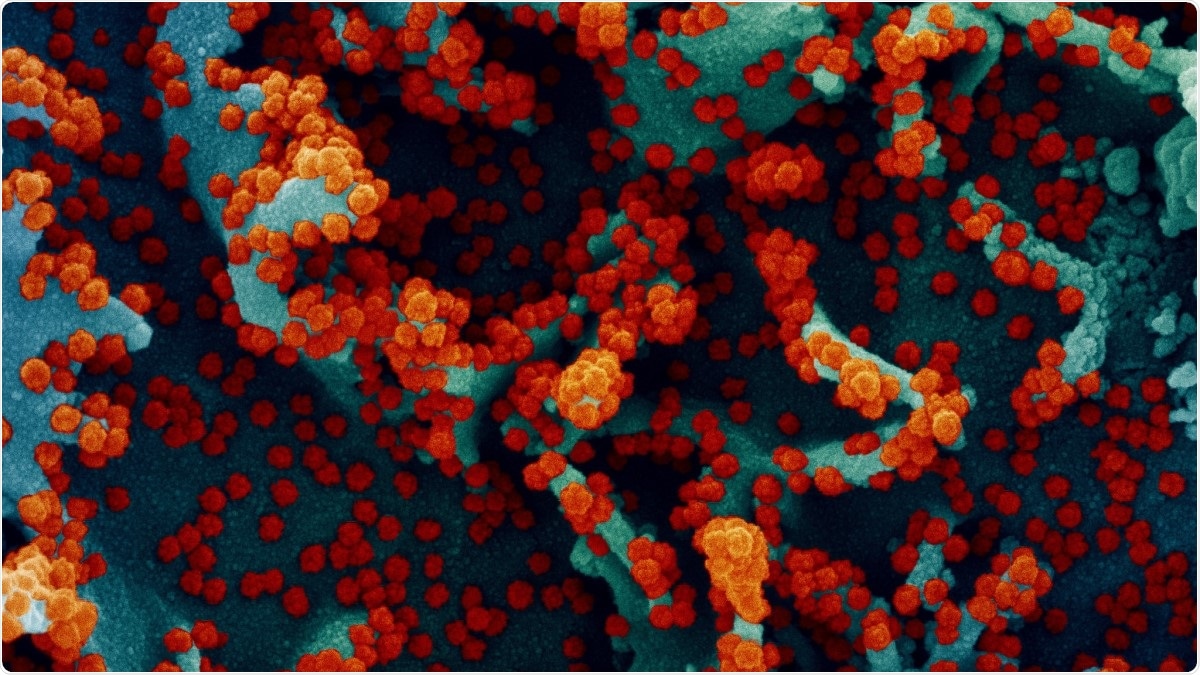Researchers in the United States have conducted a study demonstrating that a gene called CXCR6 (C-X-C Motif Chemokine Receptor 6) may play an important role in determining the severity of coronavirus disease 2019 (COVID-19).
The disease course in COVID-19 is highly variable, ranging from asymptomatic or mild in around 80% of cases to severe in around 5% of cases. In severe cases, disease can rapidly progress and lead to respiratory failure that requires urgent intensive care.
Recently, genome-wide association studies have identified several genetic loci associated with severe COVID-19. However, the precise “causal” genes within these loci are not yet known.
Now, the research team – from the University of Texas Health Science Center at Houston and Cornell University in New York – have used various integrative approaches to show that expression levels of the CXCR6 gene (found in the 3p21.31 locus) are associated with the severity of COVID-19.
Compared with patients who had moderate disease, resident memory CD8+ T (TRM) cells in the lungs of patients with severe disease expressed lower levels of CXCR6.
Moreover, the proportion of TRM cells was 3.32 times lower in severely ill patients than among moderately ill patients, reports the team.

A pre-print version of the research paper is available on the bioRxiv* server, while the article undergoes peer review.
Previous studies of COVID-19 severity
Since the COVID-19 outbreak first began in Wuhan, China, in late 2019, huge disparity in the severity of symptoms has been observed between patients.
Although age and sex are major risk factors associated with COVID-19 severity, the precise factors that confer susceptibility to COVID-19 in certain groups are not yet clear.
Genome-wide association studies (GWAS) have identified a link between the genomic risk locus 3p21.31 and critical COVID-19 illness. One recent study conducted by the Severe COVID-19 GWAS Group identified 3p21.31 as a risk locus for susceptibility to severe COVID-19 with respiratory failure.
However, six genes (SLC6A20, LZTFL1, CCR9, FYCO1, CXCR6, and XCR1) are located near the lead genetic variation, and the “causal” gene associated with this locus has not yet been identified.
How single-cell RNA-sequencing can help
Recent advances in single-cell RNA-sequencing (scRNA-seq) have provided unprecedented opportunities to elucidate underlying pathogenic mechanisms at the single-cell and cell-type level.
Recently, scRNA-seq data acquired from the bronchoalveolar lavage fluid (BALF) of patients with moderate and severe COVID-19 revealed the gene expression changes that occur in major immune cells.
However, the transcriptome alteration in specific subpopulations remains mostly unexplored,” say the researchers.
What did the researchers do?
The team applied integrative approaches, including transcriptome-wide association studies (TWAS) and colocalization analysis, to explore the connection between host genetic factors and molecular phenotype in the lung and immune cells of COVID-19 patients using two independent GWAS datasets.
The researchers also performed a single-cell transcriptomic analysis of a BALF dataset to explore transcriptome alterations in patients with moderate and severe COVID-19.
What were the findings?
The team identified and replicated the CXCR6 gene, which had a protective effect in the lungs, and another gene called CCR9 that had a risk effect in whole blood.
The researchers say studies have previously shown that CXCR6 is expressed in T cells and is essential for mediating the homing of TRM cells to the lung. Furthermore, CCR9 has been shown to regulate chemotaxis in response to thymus-expressed chemokine in T cells, they add.
The analysis also highlighted a regulatory effect on CXCR6 expression in lung and immune cells.
At the single-cell level, CXCR6 was expressed at lower levels in the lung TRM cells of patients with severe COVID-19 than in of patients with moderate disease, thereby supporting the protective effect previously identified in the lung.
The proportion of TRM cells was also 3.32 times lower in the lungs of severely ill patients than in the lungs of moderately ill patients.
What did the authors conclude?
“We characterized that CXCR6 (TRM cells marker gene) had a lower expression in severe patients than in moderate patients,” say the researchers.
Our work systematically explored the genetic effect on gene expression at chromosome locus 3p21.31 and pinpointed the gene CXCR6 might be involved in the severity of COVID-19.”
*Important Notice
bioRxiv publishes preliminary scientific reports that are not peer-reviewed and, therefore, should not be regarded as conclusive, guide clinical practice/health-related behavior, or treated as established information.
- Zhao Z, et al. Association of CXCR6 with COVID-19 severity: Delineating the host genetic factors in transcriptomic regulation. bioRxiv, 2021. doi: https://doi.org/10.1101/2021.02.17.431554, https://www.biorxiv.org/content/10.1101/2021.02.17.431554v1.
Posted in: Medical Science News | Medical Research News | Miscellaneous News | Disease/Infection News | Healthcare News
Tags: Blood, Cell, Chemokine, Chromosome, Coronavirus, Coronavirus Disease COVID-19, Gene, Gene Expression, Genes, Genetic, Genome, Genomic, Intensive Care, Locus, Lungs, Phenotype, Receptor, Research, Respiratory, RNA, SARS-CoV-2, Thymus

Written by
Sally Robertson
Sally has a Bachelor's Degree in Biomedical Sciences (B.Sc.). She is a specialist in reviewing and summarising the latest findings across all areas of medicine covered in major, high-impact, world-leading international medical journals, international press conferences and bulletins from governmental agencies and regulatory bodies. At News-Medical, Sally generates daily news features, life science articles and interview coverage.
Source: Read Full Article
